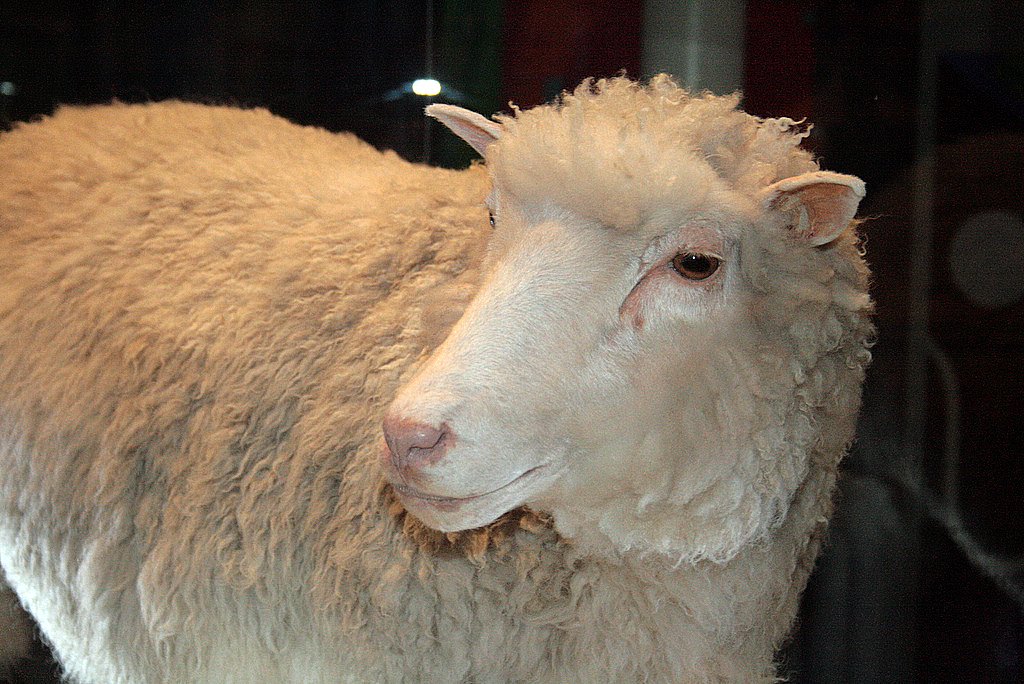Today we will continue on with our discussion of genetics. This time, we will look at practical applications of genetics: biotechnology. Genetics and information about DNA has paved the way for recent research in biotechnology. Cloning has been an example of using genetics in real life. We will take a look at what clones are and how they are produced.
I have mentioned in the previous post that zygotes are produced by the fusion of a male and female gamete. It is the first cell of a new organism that results from sexual reproduction. Zygotes are all genetically different, whereas organisms produced by asexual reproduction are identical. The production of genetically identical organisms is called cloning.
There are actually clones that aren’t artificially created – identical twins is an example. Twins result from a human zygote dividing into two cells or an embryo splitting into two. Sometimes a clone consists of large numbers of organisms. For instance, commercially grown potato varieties are huge clones.
Natural Methods of Cloning
The natural method of cloning refers to how plants reproduce through asexual reproduction. For example, a single garlic bulb grows leaves which grow into a group of bulbs. All the bulbs are a clone since they are genetically identical. Another example is a strawberry plant. This plant grows long stems with plantlets located at the end, which grow roots into the soil. These plantlets photosynthesise through their leaves, and they can be independent of the parent plant. A healthy strawberry plant can produce more than 10 genetically identical new plants through this method during a growing season. As for animals, natural methods of cloning are much less common but it is still possible. For instance, hydro clones itself by budding. Also, offspring of aphids produced by mitosis are clones of their mother.

Cloning Animals
Cloning embryos
During the early stage of development for an animal embryo, all cells are pluripotent, meaning that they can develop into all types of tissues. Thus it is possible for the embryo to divide into several parts and develop into separate individuals with necessary body components. This process is referred to as fragmentation or splitting. Coral embryos are an example that shows how a larger body is broken up into smaller groups of cells to increase the chances of one embryo surviving.
It is possible to fertilize an egg in vitro and develop it into a multicellular embryo. The concept is that individual pluripotent cells can be separated from the embryo and transplanted into surrogate mothers. Yet, a small number of clones can be created through this method since after a number of divisions, the embryo cells are not pluripotent anymore. As a matter of fact, splitting of embryos happens most successfully at the eight-cell stage.
The reason why artificially cloning embryos did not receive much attention is because we cannot assess if a new individual produced through sexual reproduction has desirable characteristics. Such inquiry led to cloning adult animals using differentiated cells.
Cloning adults
Once the embryos have developed, it is easy to observe their characteristics but difficult to clone them. This is because the cells are differentiated, not pluripotent.
Biologist John Gurdon was a pioneer in the area of cloning animals. In the 1950s, he carried out experiments on cloning in the frog Xenopus. He removed nuclei from body cells of tadpoles and transplanted them into egg cells without a nucleus. The engineered egg cells developed like zygotes and went through cell division, cell growth and differentiation as a normal frog would.
After Gurdon’s discovery, several other animals were cloned, a famous example being Dolly the sheep. Yet, animal cloning is controversial around the world, causing dispute about ethical issues behind cloning.
Production of Dolly

Dolly the sheep is probably the most famous example of successful animal cloning. Scientists used a somatic-cell nuclear transfer, and a somatic cell refers to a normal body cell with a diploid nucleus. First, adult cells were taken from the udder of a sheep and grown in the lab. The genes in the cells were made inactive by a medium containing a low concentration of nutrients so that the pattern of differentiation was lost. Then, unfertilized eggs were taken from the ovaries of another sheep, and the nuclei were removed. A small electric pulse was used to fuse the cells from the two sheep together, and the fused cells developed like a zygote. Then the embryos were injected into the uteri of a surrogate mother. The one and only embryo that developed through a normal gestation was Dolly.
Works Cited
Allott, Andrew. Biology: Course Companion. Oxford University Press, 2014.
“Dolly (Sheep).” Wikipedia, Wikimedia Foundation, 22 Nov. 2019, en.wikipedia.org/wiki/Dolly_(sheep).
“Elephant Garlic Bulbs: Large Cloves for Big Harvests!” Hoss Tools, hosstools.com/product/elephant-garlic/.
Leave a comment